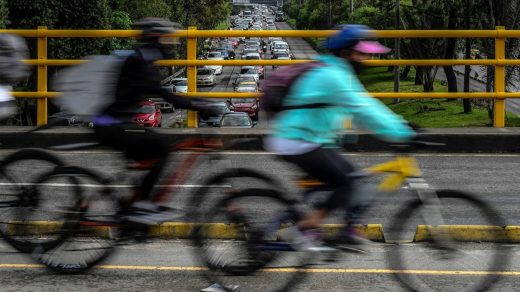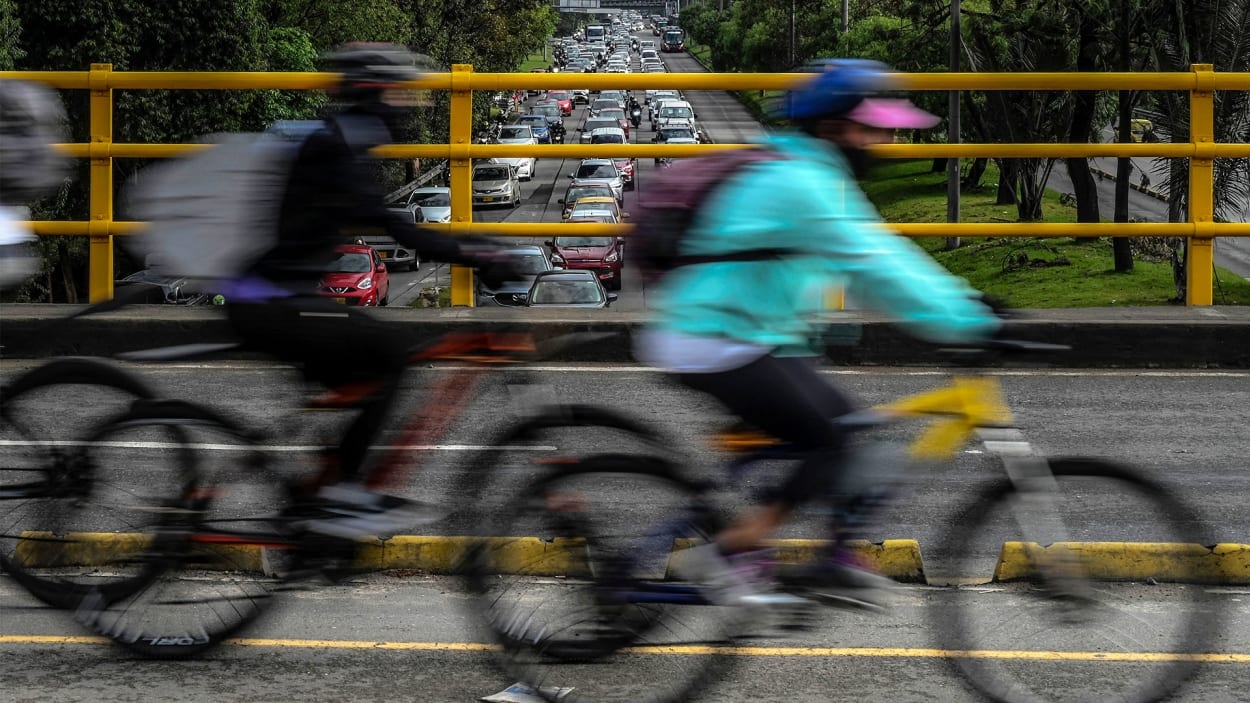Protected bike lanes can help cities cut emissions. Bogota’s $130 million investment proves it
If you want to ride a bike from one side of Bogotá, Colombia, to the other, it’s possible to make the entire trip on protected bike lanes—paths that are fully separated from car traffic. The city has 368 miles of protected lanes, and a new report calculates what that means for carbon emissions: Each year, it eliminates around 22,000 metric tons of CO2, or roughly as much carbon as could be captured by planting between 300,000 and 400,000 new trees.
Researchers from the nonprofit Institute for Transportation and Development Policy counted how many people were riding in protected lanes in Bogotá, and did the same thing in Guangzhou, China, another city with a large network of this type of bike lane. Then they surveyed riders to find out how many would have driven if the lanes didn’t exist. Around 6% said they would have used a car.
The climate benefit would likely be much bigger in an American city since more Americans own cars, and most car trips are relatively short and could be replaced by biking. But that hasn’t been possible to test yet. “Unfortunately, no cities in the U.S. have yet built a network of bicycle lanes that are large enough to analyze,” says Taylor Reich, a senior research associate at the Institute for Transportation and Development Policy (ITDP).
To make biking seem like a viable, safe alternative to more people, cities need a full network of protected lanes. “The larger the network, the greater the impact,” Reich says. “The important thing is for the maximum number of people, jobs, services, and other destinations to be [less than a fifth of a mile] from a protected bicycle lane. A bicycle lane on a single street will only be useful if it becomes part of a larger network.”
For every $200 spent to build a highway in a city, around a ton of CO2 emissions are created each year. Spending the same amount on protected bike lanes, the study found, can cut emissions by roughly the same amount.
Building bike lanes is a relatively affordable way to cut emissions compared to, say, building a new metro line. Within only a year, the economic benefits, both public and private, can outweigh the cost. In Bogotá, building the network of lanes cost around $130 million. But people who ride instead of drive are saving around $80 million. Also, the exercise that people get from riding prevents an estimated 300 deaths a year, and has a benefit of around $230 million.
ITDP built an Excel spreadsheet that other cities can use to calculate the benefit of investing in a network of new protected lanes. “We hope the model will show cities and development banks that protected bicycle-lane networks are a highly efficient investment from both an economic and a climate perspective,” says Reich.
So far, Reich says, “cities haven’t taken cycling seriously. They see it as a form of recreation or as an old-fashioned way of getting around. But actually, cycling is the future. It’s incredibly efficient, incredibly sustainable, and incredibly good for public health.”
(26)



